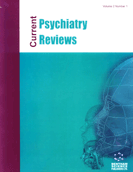Abstract
The category “Anxiety Disorders”, as classified in DSM-IV, includes disorders that not only differ phenomenologically but also in their physiologic reactivity to stressor from each other. Patients with episodic anxiety disorders, such as phobic disorder, respond physiologically like non-anxious individuals to everyday demands, except that they overreact to pathology-specific stimuli. Patients with chronic anxiety disorders, such as generalized anxiety disorder, panic disorder, post-traumatic stress disorder and obsessive-compulsive disorder, respond to everyday stressors with less physiologic change than do non-anxious individuals but with strong, often excessive, autonomic responses to pathologyspecific stimuli. This article reviews briefly the peripheral somatic response patterns of anxiety disorders, their communalities and differences in response to everyday stressors and to pathology-specific stressors. Increased muscle tension, a peripheral manifestation of central arousal, is present in all anxiety disorders during stress; however, the contribution of the sympathetic and parasympathetic nervous system to autonomic responses vary considerably. Moreover, manifestations of anxiety are modified by constitutional factors and, when present, aggravated by comorbid physical illnesses.
Keywords: Anxiety disorders, physiologic responses, diminished physiologic flexibility, acute stress, phobias, generalized anxiety disorder, panic disorder, post-traumatic stress disorder, obsessive-compulsive disorder, depersonalization disorder



